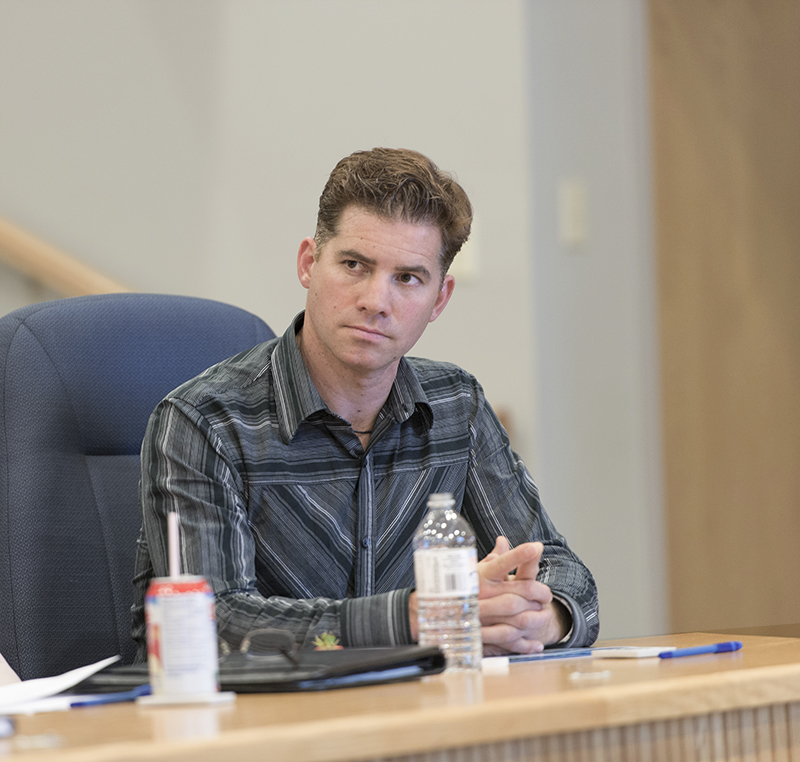Marathon Transformation

How one north shore community went the distance with a successful physician recruitment model
Marathon is located 304 km east of Thunder Bay where primary health care is led by the physician group and Marathon Family Health Team (MFHT) who serve a catchment of about 5,000 people. Care is delivered through a community clinic, in long-term care, in hospital and to 950 people in the nearby communities of Biigtigong and Pic Mobert First Nations and surrounding area. In 2010, the town was on the verge of a doctor shortage crisis and was relying on temporary locum doctors to meet the need. The community mobilized in response, with a plan to make Marathon more attractive to doctors.
Partner with NOSM
Being a teaching site for the Northern Ontario School of Medicine is a main factor in our ability to recruit. “If a doctor comes here as a student or resident, they are familiar with the community, know the team, have a feel for the culture, and are open to potentially returning to begin full-time practise,” says Brett Redden, Marathon Family Health Team’s Physician Recruiter.
“It is all about providing the opportunity for locums, residents and students to truly experience working and living in Marathon. Working alongside an amazing team of experienced and supportive physicians, allied health-care professionals, and administration support staff. There’s ample time to enjoy the lifestyle, including paddling and fishing along the shores of Lake Superior, to world-class cross country skiing. Marathon is an outdoor playground,” Brett says.
Another factor in successful recruitment in a small Northern town is offering what he calls ‘turnkey entry’ into practice for new physicians. “They literally start on the first day with all administrative details taken care of, so they can begin treating patients. This administrative piece provides a stress-free start up and includes professional finance guidance. It is truly a great recruitment advantage,” says Brett.
The Community Connector Model
How does Marathon manage to retain a full complement even now, well into the pandemic? It was a matter of necessity coordinated by leaders in the community. Dr. Catherine Cosgrave’s case study, Recruiter and Community Connector Model, highlights critical community collaboration.
Before the recruitment effort, the few physicians left in Marathon were faced with a major increase in their workloads. These doctors decided to engage external support to help with recruiting locums short-term and finding replacement family physicians in the medium-term. “Initially, to assist funding the recruiter position, the town’s largest employer, Barrick Gold; the Town of Marathon; local hospital; and, First Nations communities were approached and agreed, in the interests of economic development, to co-fund the
position with the Marathon Family Practice,” Dr. Cosgrave writes.
According to the case study, the establishment of an active recruitment committee ensured everyone was at the table to help. “At the same time, the Marathon Physician Recruitment and Retention Committee was established with representatives from the physician group,” says Brett.


Partner with NOSM
Being a teaching site for the Northern Ontario School of Medicine is a main factor in our ability to recruit. “If a doctor comes here as a student or resident, they are familiar with the community, know the team, have a feel for the culture, and are open to potentially returning to begin full-time practise,” says Brett Redden, Marathon Family Health Team’s Physician Recruiter.
“It is all about providing the opportunity for locums, residents and students to truly experience working and living in Marathon. Working alongside an amazing team of experienced and supportive physicians, allied health-care professionals, and administration support staff. There’s ample time to enjoy the lifestyle, including paddling and fishing along the shores of Lake Superior, to world-class cross country skiing. Marathon is an outdoor playground,” Brett says.
Another factor in successful recruitment in a small Northern town is offering what he calls ‘turnkey entry’ into practice for new physicians. “They literally start on the first day with all administrative details taken care of, so they can begin treating patients. This administrative piece provides a stress-free start up and includes professional finance guidance. It is truly a great recruitment advantage,” says Brett.

“Establishing contacts and involving the entire community, so they
feel a part of the process is of utmost importance.”
Brett Redden
Highlight the incentives and perks
Ensuring new recruits are comfortable really matters. Brett says in the 1980s the town donated two houses in a desirable area of the town. “When a new doctor comes, they have a rent-free place to live for two years. They’re supported from the get-go. For a newly graduated doctor, it means they can start to pay their debt right away while they work. Also, there’s a Ministry of Health incentive program which provides a fantastic start.”
To further support new physicians, a Health Force Ontario program called The Northern and Rural Recruitment and Retention (NRRR) Initiative offers taxable financial incentives to each eligible physician who establishes a full-time practice in an eligible community of the province. The grants in Ontario range between $80,000 and $117,600, paid over a four-year period. The addition of complimentary recreational passes, donated from the Town of Marathon, is an added bonus to new physicians and their families so they can experience community-based recreational facilities.
Become the ideal doctor destination
“Brett’s role has been a terrific contribution to a sustainable life for us as a group of physicians,” says Dr. Sarah Newbery, who is also NOSM’s Assistant Dean, Physician Workforce Strategy. “Two of us have been here for 25 years, one for 22, one for 20, and one for 10 years. Brett helps us recruit new physicians, and notably, his role has been key to retention. He enables all of us to focus on what we as physicians can do best, which is working to meet the health care needs of the community, teaching, research and health
system work.”
